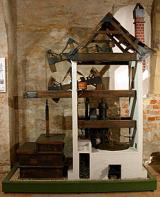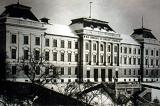2026. January 2. Friday
Central Museum of Mining - Sopron

|
Address: 9400, Sopron Templom utca 2.
Phone number: (99) 312-667, (99) 338-902
E-mail: info@kbm.hu
Opening hours: 01.04-31.10.: Tue-Sun 10-18
01.11-31.03.: Tue-Sun 10-16 |
The millennial town of Sopron has had centuries old connections with mining even before the opening of our museum. Mineral coal was first discovered in 1753 in the historical Hungary, in the woods around Sopron in the area, which is now called Brennbergbánya. Here the coal was started to be used for industrial purposes with very good results until 1951. In 1920, The School of Mining and Forestry that was transferred here from Selmecbánya according to the "Decision of Trianon" started to function in Sopron.



